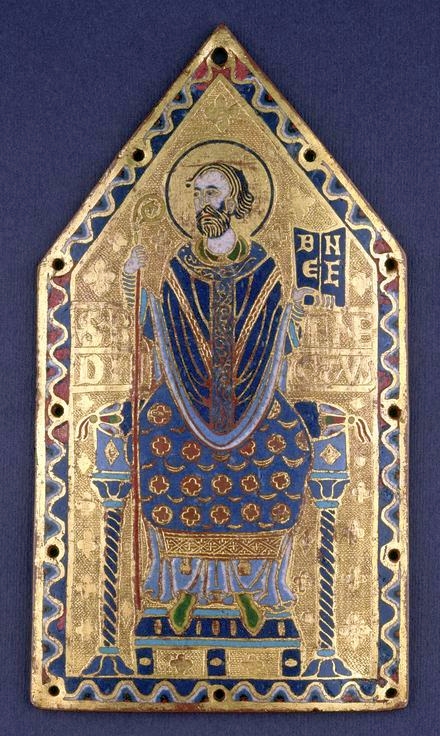
Let nothing be put before the Work of God.
Rule of St Benedict, ch 43
I recently had some correspondence with someone attempting to use my Ordo to say the Roman 1962 Office instead of the Benedictine - something of a challenge, I would have thought, given that there are significant differences between the two forms of the Office!
Accordingly, I thought it might be timely to revise some of my Learn the Benedictine Office notes and seek comments on them with a view to putting them in book form for those that want them in hard copy format.
And I thought it might be good to start with some basics about the Benedictine Office itself, in the form of some frequently asked questions.
Part I is about the Office itself and how it differs from the Roman; Part II is about the structure of the Benedictine Office; and Part III about the books used for it.
If you have other questions you would like answered, or comments/suggestions on my answers, please do post a comment!
5. Is the Benedictine Office according to the 1962-3 rubrics (and approved variants used by individual monasteries) an approved form of the Liturgy of the Hours, the official prayer of the Church?
The Benedictine Office is a form of the Liturgy of the Hours, the public prayer of the Church, approved for use by the Benedictine Confederation.
1. How old is the Benedictine Office?
The traditional form of the Benedictine Office, still followed by some monasteries today, was described by St Benedict in his Rule which was written in the first half of the sixth century (probably in the 520s).
But many of the elements of it go back much further, reflecting ancient Jewish and Apostolic traditions, early monastic practice, and many other influences, including those of the Roman Church of the time.
The rubrics for the Office have developed over time, for example to take account of new feasts, but the basic structure of the 'hours', including the psalms said at each hour and day, remains unchanged from the prescriptions in St Benedict's Rule.
2. Do all Benedictine Monasteries use the Benedictine Office as described in the Rule?
No. After Vatican II, permission was granted for Benedictines to experiment with different forms of the Office, and that 'ad experimendum' period has not been formally concluded.
As a result, most modern Benedictine monasteries use different distributions of the psalter to that set out in the Rule, consistent with the guidance on the limits to this, most particularly the 1977 Thesaurus Liturgiae Horarum Monasticae.
The 1962 Monastic Breviary remains the official form of the Office for the Order however.
3. How similar are the Benedictine and Roman Offices?
Although there are similarities between them, there are significant differences between the calendar, rubrics, organisation of the psalter, and structure and content of the individual hours between the Benedictine and Roman 1962 Offices.
While the Roman Office has been revised several times down the centuries (including two significant changes to the organisation of the psalter in the twentieth century), the Benedictine Office, at least until our own time, has always been guided by the prescriptions for it set out in the Rule.
As a result, the Benedictine office has always used a different (one week) distribution of the psalms to the Roman, and there are differences in the structure of the individual hours.
Similarly, while the Benedictine Office has adopted many of the rubrical changes of the Roman Office over time, there are some important differences between them.
4. What calendar and rubrics does the Monastic Diurnal use?
The Monastic Diurnal largely (but not entirely) follows the weekly liturgical cycle of the (1962) Extraordinary Form Mass.
The 1962 Monastic Breviary for the Benedictine Congregation, though, has its own approved calendar.
Many feasts celebrated in the Roman calendar are not included in the Monastic, and some monastic feasts are not celebrated in the Roman. In some cases, feasts common to both are celebrated with different levels of solemnity.
5. Is the Benedictine Office according to the 1962-3 rubrics (and approved variants used by individual monasteries) an approved form of the Liturgy of the Hours, the official prayer of the Church?
The Benedictine Office is a form of the Liturgy of the Hours, the public prayer of the Church, approved for use by the Benedictine Confederation.
While many modern Benedictine monasteries use different versions of the Office, consistent with the permissions to experiment granted after Vatican II, and subsequent guidance on the limits to this, most particularly the 1977 Thesaurus Liturgiae Horarum Monasticae, the 1962 Monastic Breviary remains the official form of the Office for the Order.
No comments:
Post a Comment